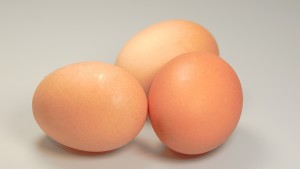Are eggs and pumpkin permitted on a low histamine diet?
 Eggs – yes (cooked)
Eggs – yes (cooked)
Yes, eggs are fine as long as they are cooked. People with HIT can safely eat egg yolks, and egg white is a histamine liberator only when in its raw state. Histamine intolerance expert Dr Janice Joneja writes: “Eggs in themselves don’t contain histamine, but egg whites are known to be a histamine-releaser.” These facts are supported on the Histamine Intolerance UK website and the Mast Cell Blog. However, if you prefer to go ultra-low-histamine, eliminate egg whites from your diet entirely – even cooked egg whites.
It is important not to confuse food allergies with histamine intolerance. Again, like gluten sensitivity, egg allergies are a different and separate issue. Eggs are a valuable source of nutrients, and just because raw egg whites contain histamine liberators, that is no reason to avoid cooked eggs.
 Pumpkin – no
Pumpkin – no
Pumpkin’s close relative is winter squash, so the two can be considered jointly. The book ‘Is Food Making You Sick? The Strictly Low Histamine Diet” recommends avoiding pumpkin.
Pumpkin is listed by the Food Intolerance Network as being safe for people with histamine intolerance. They write as follows:
“Foods that have lower histamine levels: Fresh vegetables: lettuce, cabbage, beetroot, pumpkin, onion, radishes, lamb’s lettuce, paprika, carrot, broccoli, potato, cucumber, leek, zucchini (courgettes), sweet corn, asparagus, garlic. Please be aware that, because of any other food intolerances or cross-allergies that may also be present, the low-histamine level of a particular foodstuff alone says nothing definite about whether or not the patient can tolerate it.”
Dr Judy Tsafrir writes, “I believe that many reactions are very individualized. In many cases it is worth eliminating a food that you have reason to view as problematic, and then retrying it and monitoring your symptoms. I did not think that zucchini or yellow squash were problematic for most people. It seems from my research on line that pumpkin is controversial as to whether or not it needs to be avoided on a low histamine diet.”
And Allergy UK states: “Certain foods (even food that is low in histamine) can stimulate the release of histamine from mast cells in your body (a type of immune cell). These foods include: pumpkin.”
In conclusion, we would suggest that if you are battling serious histamine intolerance you should avoid pumpkin.

 Eggs – yes (cooked)
Eggs – yes (cooked) Pumpkin – no
Pumpkin – no Antihistamines
Antihistamines